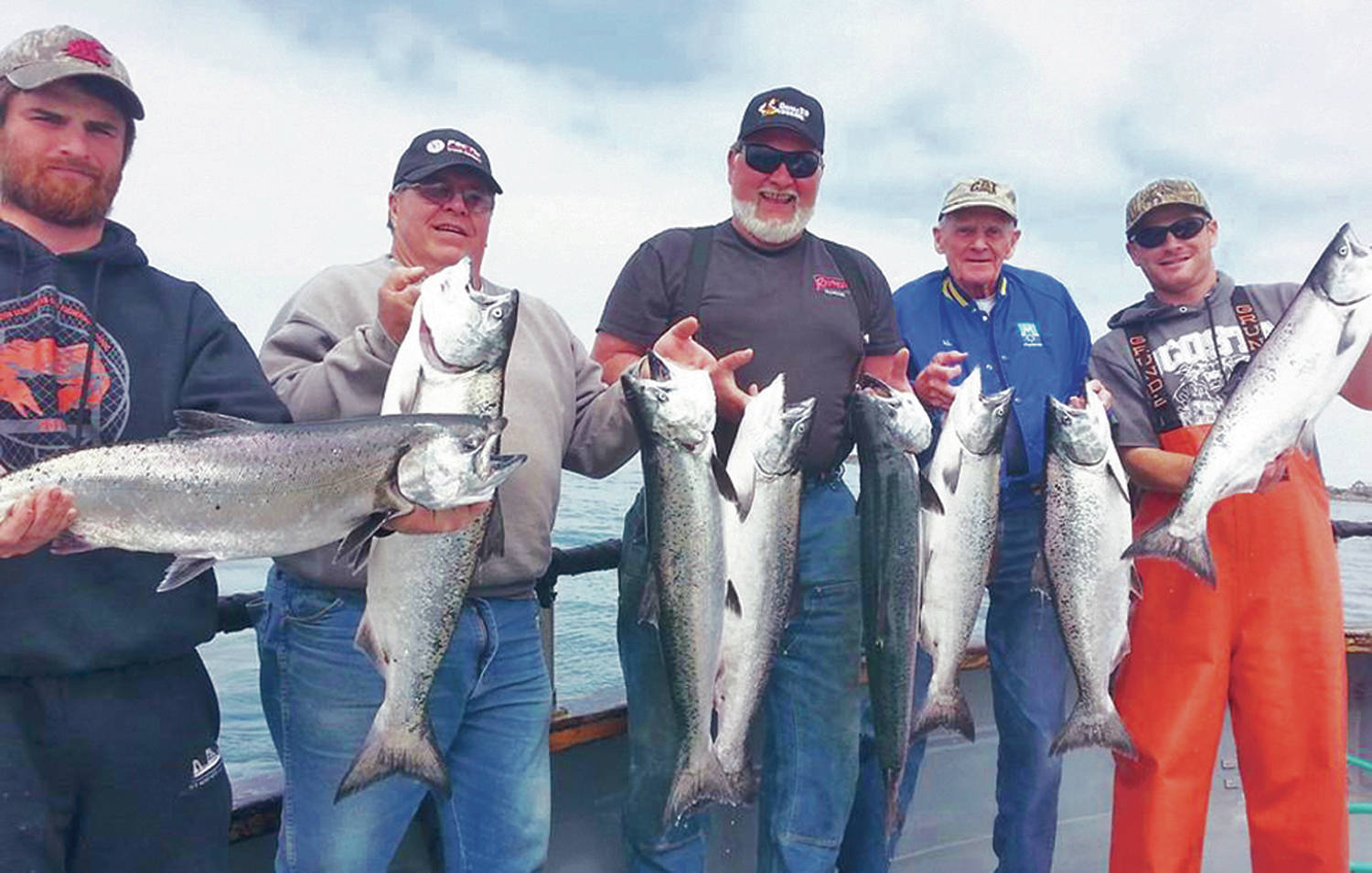Small quotas and a limited season will be the reality for salmon fishermen this summer in the waters inside and outside Grays Harbor and Willapa Bay.
“It’s critical that we ensure fisheries are consistent with ongoing efforts to protect and rebuild wild salmon stocks,” said Ron Warren, head of the state’s Department of Fish and Wildlife fish program. “Unfortunately, the loss of salmon habitat continues to outpace these recovery efforts. We need to reverse this trend. If we don’t, salmon runs will continue to decline and it will be increasingly difficult to develop meaningful fisheries.”
Salmon fishing seasons were set April 11 by the Pacific Fishery Management Council, which approved a recreational chinook catch quota of 27,500 fish, which is 17,500 fewer fish than 2017’s quota of 45,000. The council, which establishes fishing seasons in ocean waters three to 200 miles off the Pacific coast, also adopted a quota of 42,000 coho for this year’s recreational ocean fishery – the same as last year’s coho quota.
Marine Area 2, out of Westport, will only be open Sunday through Thursday starting July 1. The ocean salmon fisheries out of Ilwaco, La Push and Neah Bay will be open daily beginning June 23. All marine areas will close Sept. 3 or sooner if quotas are met. The limit will be two salmon daily, only one of which may be a chinook, in all areas except La Push, where the limit will be two salmon daily. In all areas, wild coho must be released.
In the Grays Harbor area, the Area 2-2 Humptulips North Bay chinook fishery begins in August and runs through Sept. 15. The Area 2-2 East Bay coho fishery begins two weeks later than 2017 and is scheduled for Oct. 1-Nov. 30. The Chehalis River spring chinook fishery is scheduled May 1-June 30 while the jack fishery in the lower river runs Aug. 1-Sept. 15.
The Humptulips River is scheduled to be open for salmon fishing Sept. 1-Nov. 30, about two months fewer than last year. Anglers can keep one wild chinook during the month of September but must release wild chinook the remainder of the fishery.
As for the Willapa Bay area, the season will be similar to last year’s and is scheduled Aug. 1-Jan. 31. Anglers can keep three adult salmon, one of which may be a coho. The freshwater rivers in the Willapa Bay area have similar seasons to 2017. Anglers may retain one wild coho.
“No fisherman wants to catch the last salmon,” said Lorraine Loomis, chair of the Northwest Indian Fisheries Commission. “We must work together if we are going to restore salmon to sustainable levels.”



